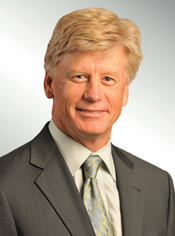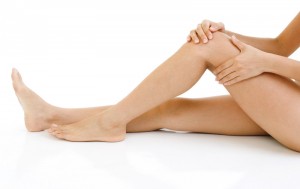 I am very pleased to introduce you to Craig Westin, M.D., orthopedic surgeon for the Chicago Center for Orthopedics at Weiss Memorial Hospital and medical director of Chicago’s Joffrey Ballet. Dr. Westin received his orthopedic training at Harvard and after a sports medicine fellowship in Europe, ran the ski clinic at the Alta and Snowbird ski resorts in Utah. In addition to his role at Joffrey Ballet, he is a team physician with the U.S. Figure Skating Team and the personal orthopedic surgeon for Olympic Figure Skating Silver Medalist, Sasha Cohen.
I am very pleased to introduce you to Craig Westin, M.D., orthopedic surgeon for the Chicago Center for Orthopedics at Weiss Memorial Hospital and medical director of Chicago’s Joffrey Ballet. Dr. Westin received his orthopedic training at Harvard and after a sports medicine fellowship in Europe, ran the ski clinic at the Alta and Snowbird ski resorts in Utah. In addition to his role at Joffrey Ballet, he is a team physician with the U.S. Figure Skating Team and the personal orthopedic surgeon for Olympic Figure Skating Silver Medalist, Sasha Cohen.
Dr. Westin generously took time out of his busy schedule to talk with Dance Advantage about knee problems, proper alignment, pain, and injuries common to dancers.
Dance Advantage: We have readers who practice or compete in both figure skating and dance. These two disciplines share some patterns of injury I’m sure but, what are concerns unique to each?
Dr. Westin: Both disciplines have frequent problems with the foot and ankle, but for different reasons.
Dancers have unique problems with pointe. The extreme downward position of the ankle when dancing en pointe can pinch the normal structures in the back of the ankle producing pain. Dancers must also have very strong muscles to maintain proper alignment of the foot.
Skaters have many foot problems but most are caused by the very rigid boots of skating. Apart from proper fit (most elite skaters have custom boots) and careful break-in, the blade must be expertly mounted and an arch support may be built into the boot if needed.
DA: What is the number one knee injury you encounter in dancers?
Dr. Westin: The kneecap area is the most frequent site of trouble. When the knee bends deeply the pressure between the patella (kneecap) and the femur (thigh bone) is about seven times the body weight! The patella glides over the end of the femur in a groove that matches the back of the patella. Problems occur with the outward turn required of dance. This can pull the patella off-center and cause pain. Hip ‘turn-out’ must be good to reduce the outward twist on the knee.
DA: I’ve known of recreational and competitive dancers who have chronic knee problems, even those that require surgery in dancers younger than 18. How can dancers best avoid knee injury?
Dr. Westin: Proper alignment of the hip, knee and foot is important for good dance technique and for maintaining healthy knees. When the knee bends, the kneecap should be centered over the middle of the foot. This spreads the pressure [DA note: Again… 7 times your body weight!] in the knee evenly to reduce injury. When the kneecap is off center due to poor alignment, uneven pressure on the kneecap increases the risk of injury. The knee is capable of about 20 degrees of twist, but it doesn’t tolerate the twist well with full weight on the leg.
Alignment of the knee starts by checking the feet and hips!
The foot is the most common place where alignment is affected. Pronation is the term that refers to the rolling-in motion of the middle part of the foot. Pronation is normal and is a very important in absorbing the shock of a jump. The movement of pronation lowers the arch and twists the knee inward. It makes for “knock-kneed” alignment, when the knees are abnormally close together and the ankles are spread widely apart. If you bend the knee with the foot pronated, the kneecap passes over the big toe side of the foot rather than the center of the foot. Good strength of the muscles below the knee is necessary to control ankle position.
Sickling is a term for turning the foot the opposite way, which is also referred to as inversion. Sickling is a sign of poor technique. Dancers need good strength to pull the foot both inward and outward below the ankle. The key is to have balanced, equal strength.
Proper hip turnout is required for ballet. Complete turn out at the hip reduces twisting forces on the knee. Stretches and proper warm up improves motion of all joints including the hip. Muscles that help turn the leg out at the hip are called external rotators. They are in the back of the hip, deep in the buttocks. These may need to be strengthened to help turnout. Most exercise programs overlook them. An instructor, and athletic trainer or physical therapist can teach dancers some exercises to strengthen the hip external rotators. To some degree hip turnout is a gift not every dancer is blessed with.
DA: Dancers often feel the need to work through pain. What are the risks of this philosophy and when should a student see a doctor about pain or discomfort?
Dr. Westin: We should pay attention to pain, not ignore it. Pain is a signal that something is wrong. We need to look for the cause, but the answers may not be medical.
Good technique and sufficient strength are needed for optimal function. Pain can be the result of poor technique OR weakness can lead to a breakdown of good technique.
Have your instructor watch you do your painful movement. If your foot, knee, hip and spine positions are correct the impact stresses of dance are absorbed and distributed evenly to reduce injury. You should see a doctor if you have a breakdown in technique and can’t correct it, or if your instructor sees nothing wrong.
 The site of pain is not always the origin of the problem. For example, Achilles tendon pain can result from ankle muscle weakness or from loss of ankle motion. A physical therapist can correct most dancing problems.
The site of pain is not always the origin of the problem. For example, Achilles tendon pain can result from ankle muscle weakness or from loss of ankle motion. A physical therapist can correct most dancing problems.
Keep in mind the three- day rule: If a pain persists for three days, you should tell your instructor. You can’t report every little thing, but if pain is prolonged, it will lead to weakness and further trouble.
In addition, take note of new choreography or layoffs. Unfamiliar movements will put unfamiliar stresses on your body that can lead to injury. New movements may require additional out-of-studio exercises to build strength. After a period of complete rest (vacation or illness), work back to a regular schedule over a week or so.
It’s best to remain physically active when you are away from dance. “Cross training” (doing other activities) helps the mind as well as the body refresh itself.
Having touched on some of these topics and concerns on Dance Advantage in the past, I have to say it’s great to have a medical doctor and sports medicine specialist as experienced as Dr. Westin corroborate what we try to consistently communicate to our readers and students. I hope many of you teachers out there are feeling the same way!
Thanks so very much, Dr. Westin, for giving your time here on the site and for all you do in the dance world. You can find out more about Dr. Westin at the Chicago Center for Orthopedics website.
We want to hear from you!
What are YOUR questions about knees, orthopedic surgery, and dancer injuries?
Write them in the comments below. Your question may be selected and addressed by Dr. Westin or another expert contributor on Dance Advantage.
Nichelle Suzanne is a writer specializing in dance and online content. She is also a dance instructor with over 20 years experience teaching in dance studios, community programs, and colleges. She began Dance Advantage in 2008, equipped with a passion for movement education and an intuitive sense that a blog could bring dancers together. As a Houston-based dance writer, Nichelle covers dance performance for Dance Source Houston, Arts+Culture Texas, and other publications. She is a leader in social media within the dance community and has presented on blogging for dance organizations, including Dance/USA. Nichelle provides web consulting and writing services for dancers, dance schools and studios, and those beyond the dance world. Read Nichelle’s posts.

